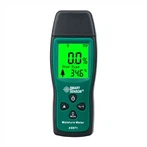Which fields are most suitable for metallographic microscopes to be used in?
Olympus metallographic microscope electronic eyepieces are mainly used for biological, stereoscopic, and metallographic photography of any standard. They are widely used in medical and health institutions, laboratories, research institutes, and schools for biology, pathology, and Study observation, education and research, clinical experiments and routine medical examinations; analysis and judgment of materials in factories and laboratories.
Improvement of Olympus metallographic microscope
In recent years, the improvements of Olympus metallographic microscopes mainly include the following points:
Infinite chromatic aberration and aberration correction optical system or simply infinity optical system. When using this optical system, when the incident light is reflected from the surface of the specimen and enters the objective lens again, it does not converge but remains as a parallel beam until it passes through the lens. The tube lens only converges and forms the central image, that is, it expands the real image once, and then it is expanded again by the eyepiece. The advantage of the infinity optical system is the various optical accessories in the microscope (such as dark-field beam separators, polarizing light separators) , prisms, analyzers, and other additional color filters used for differential interference contrast) can be placed in the space between the objective flange and the lens lens of the parallel beam, because the imaging beam is not affected by the above-mentioned optical accessories. Without interference, the quality of the object image will not be damaged, thus simplifying the correction of chromatic aberration and aberration in the objective lens design. In addition, in the infinity optical system, the lens barrel length coefficient remains one, regardless of the distance between the objective lens and the eyepiece No matter how far it is, there is no need for a fixed transfer lens system. At present, Olympus metallographic microscopes produced by German companies, Japanese companies, and Olympus have all adopted infinity optical system designs.
In the new Olympus metallographic microscope, there is no need to readjust the focus after replacing the objective lens and eyepiece. Generally, only a slight adjustment of the fine-tuning knob is required to focus the object image. For this reason, the optical mechanical dimensions of the objective lens and eyepiece should meet the same focal length. The requirements for surface properties are: ① The conjugate distance of all objective lenses (i.e., the distance from the surface of the specimen to the real image plane of the objective lens) is equal; ② The distance from the real image magnification of all objective lenses to the eyepiece tube mouth remains unchanged; ③ The focal plane of all eyepieces coincides with the image plane of the objective lens to expand the real image. Confocality is not an inherent feature of the objective lens or eyepiece, but a method adopted in the design of new microscopes to facilitate user operation.






